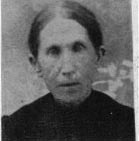
In reviewing French Canadian books, I find some new terms. First is the arpent ; it is both a measure of length and or area – the measures are close to our feet and acre. On length, 180 French feet are equivalent to 192 English feet. I guess the French has longer feet. (192/180 equals 1.07 English feet.) Similarly one square arpent is 0.85 acres.
I was intrigued by the topographical map of the Isle of Orleans at the House of Our Ancestors in Sainte Famille. Here the lots of original settlers are shown – the map looks like alternating zebra stripes. The lots have narrow river frontage but are deep – going to the center of the island. Typical lots are a few arpents wide and up to 40 arpents deep. By checking the adjacent family names against the pedigree marriage charts, you find that people did not have to travel far to find their mate – often within 5 farms.
The second term is rang – it means row line. The first settlements were along water coasts. Rows of lots are collectively called a rang. The waterfront of a rang was called the fronteau or devanture (river lot ). The road cleared between the first and second rangs was called a fronteau – even though it was not on the river. The second rang was laid out parallel to the river. Each settler had to clear out and maintain a road that fronted his lot. Families often purchased a lot across the road from their original lot and gave it to their children or grandchildren. Thus, in St. Ferdinand d’Halifax, we found the Dubois and Binette farms on the same side of the river but they were in different rangs. I counted 5 rangs.
Later, homes faced homes on opposite sides of the road. The neighborhood was denser. A strong sense of solidarity permeated relations with neighbors. To the habitant, the premier voisin (nearest neighbor) comes even before relatives. The rang was the fundamental social unit. Each rang had its own organization - a school, chapel, dairy, etc. Rangs were established before parishes. Villages were not needed since farmers did little trading. Later old folks, no longer farming, moved close to the church.
Another term - league – a unit of length – the distance that a person or a horse can walk in an hour – usually 3.5 miles or 5.5 kilometers. For example, Beauce was 3 leagues from the St. Laurence river.
Finally, the last measure is the livre. It is the French unit of currency until 1795. Anne Guillaume, a Daughter of the King, and bride of Francois Dubois dit LaFrance had a dowry estimated at 300 livres when she left France for Canada in 1671 at the age of 20.



